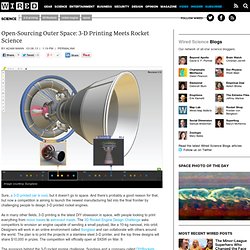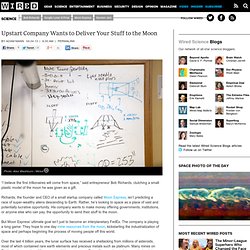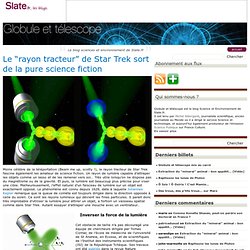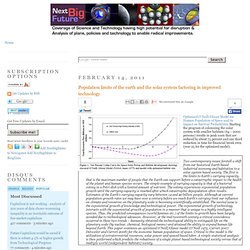

Shapley Supercluster. The Shapley Supercluster or Shapley Concentration (SCl 124) is the largest concentration of galaxies in our nearby universe that forms a gravitationally interacting unit, thereby pulling itself together instead of expanding with the universe.

It appears as a striking overdensity in the distribution of galaxies in the constellation of Centaurus. It is 650 million light years away (z=0.046). History[edit] In the late 1920s, Harlow Shapley and his colleagues at the Harvard College Observatory started a survey of galaxies in the southern sky, using photographic plates obtained at the 24-inch Bruce telescope at Bloemfontein, South Africa. By 1932, Shapley reported the discovery of 76,000 galaxies brighter than 18th apparent magnitude in a third of the southern sky, based on galaxy counts from his plates. Current interest[edit] Émetteur Lyman-alpha. Un article de Wikipédia, l'encyclopédie libre.

Lyman-alpha blob. Animation of a Lyman-alpha blob.

The giant Lyman-alpha blob LAB-1 (left) and an artist's impression of what it might look like if viewed from relatively close (right). In astronomy, a Lyman-alpha blob (LAB) is a huge concentration of a gas emitting the Lyman-alpha emission line. LABs are some of the largest known individual objects in the Universe. Some of these gaseous structures are more than 400,000 light years across.
So far they have only been found in the high-redshift universe because of the ultraviolet nature of the Lyman-alpha emission line. The most famous Lyman-alpha blobs were discovered in 2000 by Steidel et al.[1] Matsuda et al., using the Subaru Telescope of the National Astronomical Observatory of Japan extended the search for LABs[2] and found over 30 new LABs in the original field of Steidel et al.,[1] although they were all smaller than the originals.
Examples[edit]
Space Travelling. Planets. Dark Matter & Whormholes. Open-Sourcing Outer Space: 3-D Printing Meets Rocket Science. Image courtesy Sunglass Sure, a 3-D printed car is cool, but it doesn’t go to space.

And there’s probably a good reason for that, but now a competition is aiming to launch the newest manufacturing fad into the final frontier by challenging people to design 3-D printed rocket engines. As in many other fields, 3-D printing is the latest DIY obsession in space, with people looking to print everything from moon bases to astronaut meals. The 3D Rocket Engine Design Challenge asks competitors to envision an engine capable of sending a small payload, like a 10-kg nanosat, into orbit. Designers will work in an online environment called Sunglass and can collaborate with others around the world. The sponsors behind the 3-D rocket engine challenge, Sunglass and a company called DIYRockets, hope to spur innovative ideas for space travel and bring down manufacturing costs. Upstart Company Wants to Deliver Your Stuff to the Moon. Photo: Alex Washburn / Wired “I believe the first trillionaires will come from space,” said entrepreneur Bob Richards, clutching a small plastic model of the moon he was given as a gift.

Richards, the founder and CEO of a small startup company called Moon Express, isn’t predicting a race of super-wealthy aliens descending to Earth. Rather, he’s looking to space as a place of vast and potentially lucrative opportunity. His company wants to make money offering governments, institutions, or anyone else who can pay, the opportunity to send their stuff to the moon. But Moon Express’ ultimate goal isn’t just to become an interplanetary FedEx. Over the last 4 billion years, the lunar surface has received a shellacking from millions of asteroids, most of which contained rare earth elements and precious metals such as platinum. New Dimension: Nebulas Are Even More Amazing in 3-D. Du boson de Higgs à l'apocalypse. Cela ressemble à un scénario de film de science-fiction de série B.

Pire que la téléportation dans Star Trek. Pourtant, la nouvelle provient du respectable meeting annuel de l’American Association for the Advancement of Science qui s’est tenu à Boston du 14 au 18 février 2013. Le “rayon tracteur” de Star Trek sort de la pure science fiction. Moins célèbre de la téléportation (Beam me up, scotty !)

, le rayon tracteur de Star Trek fascine également les amateur de science fiction. Un rayon de lumière capable d’attraper les objets comme un lasso et de les ramener vers soi… Très utile lorsqu’on ne dispose pas du magnétisme ou de la gravité. Et puis, la lumière est beaucoup plus précise pour viser une cible. The Year's Most Audacious Private Space Exploration Plans.
Le CERN fera-t-il voyager dans le temps? Un an après l'incident technique qui avait provoqué sa fermeture en septembre 2008, le LHC (Large Hadron Collider) le fameux collisionneur de hadrons du CERN a commencé à se remettre en route.

Les premières particules (ions et protons) ont même fait leur entrée, il y quelques jours, dans le gigantesque circuit fermé (27 kilomètres de diamètre) de l'installation où leurs collisions devraient donner quelques précieuses indications sur la validité des théories physiques qui se multiplient ces dernières années. Mais tout n'est pas rose, non plus, dans une communauté scientifique où se mêlent la crainte, l'espoir, le réalisme et l'angoisse face aux défis que peut générer le LHC. Sauveur ou bourreau? Publicité Comme s'il s'agissait d'un scénario de science fiction, les théories les plus folles et les plus romanesques circulent (souvent sur la toile) sur les dangers de cette pharaonique installation. Wells ou pas Wells? C'est donc le bon sens qui semble nier ces paradoxes.
Heureux qui comme... ? Population limits of the earth and the solar system factoring in improved technology. Optimized O’Neill/Glaser Model for Human Population of Space and its Impact on Survival Probabilities Starting the program of colonizing the solar system with smaller habitats (64 – 2000 persons) results in peak costs that are reduced by about 75 percent and one third reduction in time for financial break even (year 25 for the optimized model).

Two contemporary issues foretell a shift from our historical Earth based industrial economy and habitation to a solar system based society. The first is the limits to Earth’s carrying capacity, that is the maximum number of people that the Earth can support before a catastrophic impact to the health of the planet and human species occurs. The simple example of carrying capacity is that of a bacterial colony in a Petri dish with a limited amount of nutrient. The colony experiences exponential population growth until the carrying capacity is reached after which catastrophic depopulation often results.